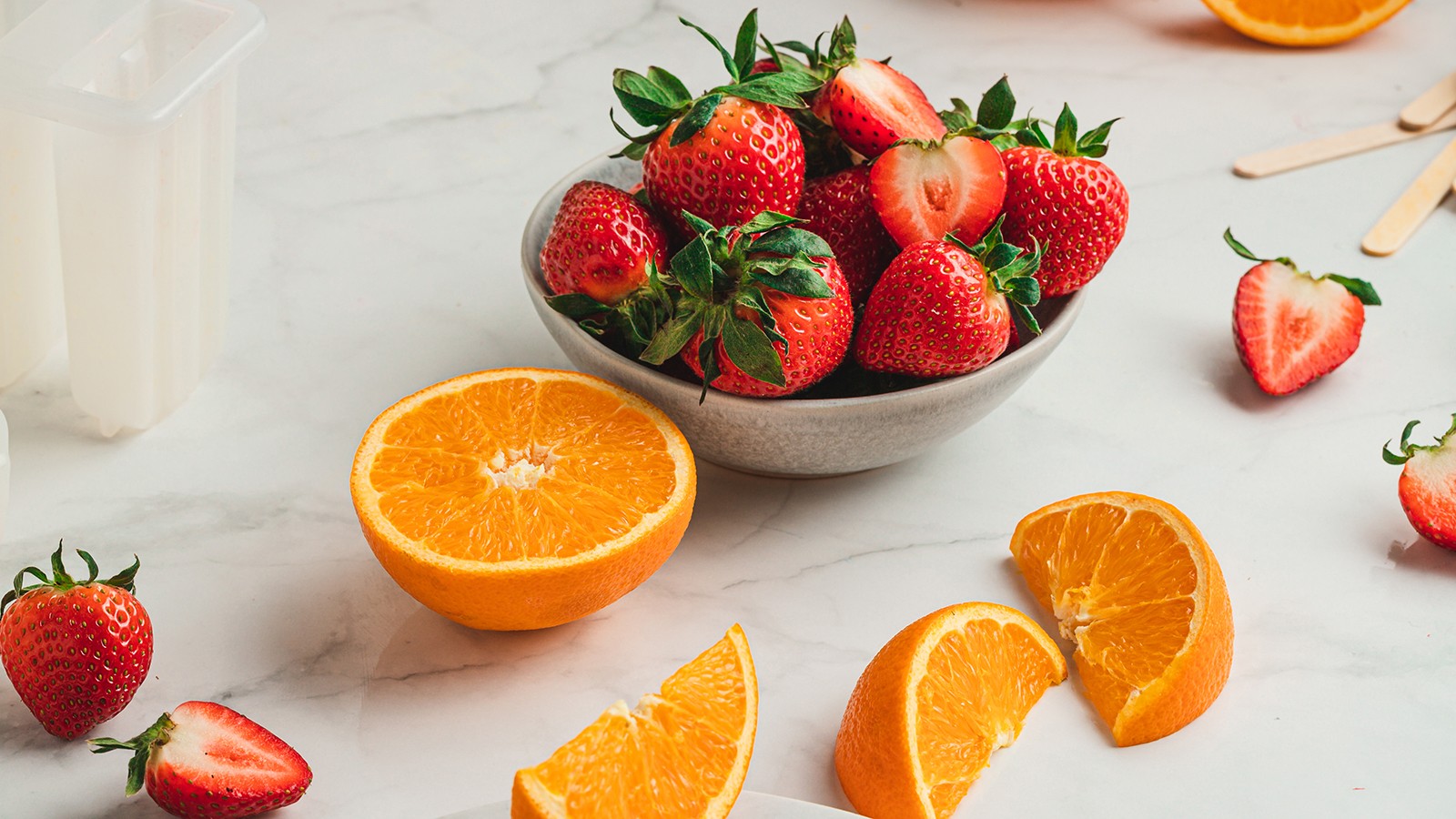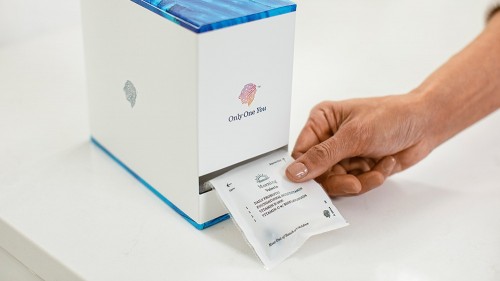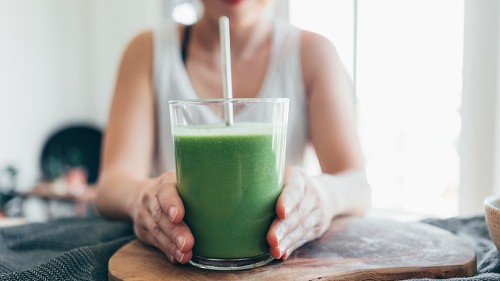Vitamin C: Benefits, Sources, Optimal Dosage, and Safety
Published on August 31, 2021
Medically Reviewed by Anthony Dugarte, MD
As one of the most frequently studied vitamins, it might be surprising to know that scientists are just beginning to develop a deeper understanding of all the roles in vitamin C. While we know it works as an antioxidant, supports skin health, and is needed for immune function, what are its other benefits for your health?


What Is Vitamin C?
Vitamin C was first called “hexuronic acid” when it was discovered in the 1920s and 1930s. It was later renamed “ascorbic acid” because of its most notable role of being “anti-scurvy.”
For centuries mariners had been rationing lemons and limes to prevent scurvy, a deadly disease that killed millions of sailors when they were away from fresh foods for months while at sea.
At that time, it was only vaguely understood that scurvy was caused by a nutrient deficiency, and they had no way of understanding that the nutrient was vitamin C.
Vitamin C is now known to have many roles in the body. It’s a powerful antioxidant, vital for collagen formation, and helps the body fight many diseases.
It’s a water-soluble, essential nutrient for humans, which means that we cannot make it on our own and must get it in our diets daily.
Vitamin C Benefits: What Does Vitamin C Do?
Vitamin C is important to human life in many ways, and we’re still learning about its many benefits, including its importance in the structure of our bodies, use as an immune system cofactor, disease-fighting powers, and more.
Here are 5 scientifically proven benefits of vitamin C:
Vitamin C Is Needed for Collagen Synthesis
Imagine being a mariner in the 1500s, setting out to discover new lands.
You’re a burly tough guy, so everything seems great for a couple of months until you and your shipmates begin to fall apart, quite literally.
Everyone’s gums are swelling and rotting away, spontaneous purple bruising creeps over your bodies, old wounds are opening and infected, you have debilitating joint pain, and you have so little energy that you can hardly move.
And then, you die.
This condition is called scurvy, and explorers then had no way of knowing that it was because their collagen was breaking down from a simple lack of vitamin C. (1)
Collagen is the most abundant protein found in our bodies, responsible for maintaining the structure of everything, including skin, bones, blood vessels, and ligaments.
Collagen cannot be maintained without help from vitamin C. Vitamin C is responsible for allowing new collagen proteins to link together once they’re created.
Without vitamin C, within just a few weeks, tissues begin to fall apart.
While scurvy results from a severe deficiency that is now considered rare, people with low fruit and vegetable intake are still at risk.
Getting adequate vitamin C over a lifetime may help keep the body’s structures strong and healthy, reducing premature damage and aging like sagging skin. (2)
In addition, some studies show that vitamin C supplementation may accelerate the healing of collagen in bones and tendons after musculoskeletal injuries. (3)
Summary
Vitamin C is a key nutrient in the maintenance of body structure. Lack of vitamin C is fatal over time.
Vitamin C Helps Protect the Skin
Vitamin C plays a major role in protecting the skin from damage. Healthy skin has a high vitamin C content, where it functions as a powerful antioxidant.
Antioxidants are molecules that capture free radicals, substances that would otherwise do damage to our bodies.
We naturally make free radicals as a waste product while metabolizing food for energy.
Free radicals can also be caused by environmental factors like cigarette smoke, environmental pollutants, and ultraviolet (UV) sun rays.
Our bodies count on antioxidants like vitamin C to control the damage to surrounding cells which would otherwise lead to inflammation.
Research is showing that adequate vitamin C can help protect against permanent sun damage, called photodamage. (4)
When UV light touches our skin, vitamin C protects the outer layers of the cells and their DNA from the free radicals released with UV exposure.
Exposure to toxic environmental factors can deplete vitamin C stores in the skin.
It may be beneficial to increase your intake of foods high in vitamin C on longer exposure days and to talk to your dermatologist about adding a topical vitamin C to your skincare regimen.
Summary
Adequate stores of vitamin C in the skin help protect against damaging free radicals caused by environmental toxins and normal metabolism.
Vitamin C Supports a Healthy Immune System
Vitamin C is an important cofactor in several immune system functions. Cofactors are chemicals that help enzymes perform their functions.
For example, in well-nourished individuals, vitamin C is abundant in white blood cells. They stimulate cell migration to infection sites, stimulate the cells to engulf invading microbes, and ultimately help destroy the germs. (5)
The skin is considered the body’s most important organ of the immune system.
Without vitamin C to help keep the skin's collagen structure intact, pathogens could easily find their way inside.
Vitamin C is important for wound healing because of its anti-inflammatory antioxidants, assistance to white blood cells, and its role in collagen formation. (6)
In a 2015 animal study, wound healing and strength of healed tissue outcome was best in mice who were not deficient prior to the experiment.
The use of vitamin C to help fight the common cold is controversial. (7)
A 2006 review of studies showed that supplementation of vitamin C was not helpful to the general healthy population in cold prevention. Still, it may be helpful for those experiencing harsher conditions like extreme exercise. (8)
Summary
Adequate vitamin C intake helps keep white blood cells and other immune system factors functioning their best.
May Increase Non-Heme Iron Absorption
Iron is needed to make hemoglobin, a protein in red blood cells that carries oxygen to all the cells in the body, including the brain. (9)
Low hemoglobin in the body can cause a condition called iron deficiency anemia (IDA), with symptoms of severe fatigue and shortness of breath.
Iron in food can be found in animal sources, called heme iron, and from plant sources, called non-heme.
Non-heme sources of iron from foods like spinach, beans, and lentils absorb more effectively in the presence of high vitamin C foods eaten during the same meal. (10)
For vegetarians, pairing high iron foods with foods high in vitamin C can be helpful in avoiding IDA.
Consider delicious pairs like tossing fresh strawberries, which are high in vitamin C, and spinach, which is a non-heme source of iron, together in a salad.
Summary
Vitamin C pairing is important for absorbing vegetarian sources of iron and can be helpful in avoiding iron deficiency anemia.
What Else Is Vitamin C Good For?
Some research indicates that there may be many other health benefits to getting adequate vitamin C in our daily diets, including cancer survival, cardiovascular health, and fighting macular degeneration.
The consumption of fruits and vegetables high in vitamin C has been shown to reduce the risk of cancer. (11)
One study showed that a higher intake of fruits and vegetables before diagnosis increased the survival rates for some forms of cancer. (12)
Oxidative damage is a major contributor to heart disease. This is one reason researchers think that people with high intakes of antioxidant-rich fruits and vegetables are at lower risk. (13)
Some studies have found that people with higher levels of vitamin C in their blood are at lower risk for cardiovascular risks like stroke. (14)
The gift of sight is something we often take for granted. Some people develop macular degeneration with age and slowly lose their vision.
Some research shows that getting adequate nutrients in the diet, including vitamin C, may help slow the progress of this disease. (15)
Summary
Research regarding vitamin C’s health benefits is ongoing and promising. There are a growing number of benefits to getting adequate amounts in your daily diet.
How Much Vitamin C Do You Need?
Even with all the research we have to date on vitamin C, we are still learning how much is needed for everyday health.
As with all nutrients, getting your vitamin C from food is recommended to get the benefits of all the other nutrients in the whole foods. (A convenient list of high vitamin C foods is provided later in this article.)
| Age Group | Recommended Daily Allowance (RDA) | Tolerable Upper Intake (UL) |
|---|---|---|
| Children Age 1–3 | 15 mg | 400 mg |
| Children Age 4–8 | 25 mg | 650 mg |
| Children Age 9–13 | 45 mg | 1,200 mg |
| Teen Boys Age 14–18 | 75 mg | 1,800 mg |
| Teen Girls Age 14–18 | 65 mg | 1,800 mg |
| Adult Men | 90 mg | 2,000 mg |
| Adult Women | 75 mg | 2,000 mg |
| Pregnant Women | 85 mg | 2,000 mg |
| Breastfeeding Women | 120 mg | 2,000 mg |
Source: National Institute of Health (16)
Vitamin C Deficiency
Severe vitamin C deficiency of less than 10 mg daily can lead to scurvy, generally within a few weeks. (1, 17)
While such extreme cases are rare in the United States, many people still have inadequate intakes in their diets, reducing the ability to fight diseases and make repairs.
Groups that may be at higher risk for vitamin C inadequacy include:
- Smokers and second-hand smokers
- Alcoholics
- People with limited food access
- People with malabsorption problems like cancer or inflammatory bowel disease
- Older individuals with reduced appetite
Smokers and second-hand smokers often have lower vitamin C in their skin and white blood cells, likely because of excess oxidative stress.
It’s recommended for these individuals to increase their vitamin C RDA by 35 mg.
Individuals with any of these risk factors may benefit from vitamin supplementation but should also be under the care of a doctor to follow their health conditions.
Vitamin C Sources
Highest Food Sources and Best Cooking Methods
Fruits and vegetables are the best sources of vitamin C.
Many people think of oranges first when considering the nutrient, and although the citrus fruit is an excellent source, there are others that are even higher:
| Strawberries | 98 mg |
| Raw Foods (1 cup) | Vitamin C Amount |
|---|---|
| Red Peppers | 191 mg |
| Oranges | 97 mg |
| Papaya | 88 mg |
| Broccoli | 81 mg |
| Pineapple | 79 mg |
| Brussels sprouts | 75 mg |
| Cauliflower | 51 mg |
| Tomatoes | 41 mg |
Source: United States Department of Agriculture FoodData Central (18)
When it comes to getting the highest vitamin C content from your fruits and vegetables, some research shows that the freshest sources are best because the nutrient is sometimes lost with time. (19)
Freezing produce is also a good way to lock in vitamin C if the food is not exposed to heat during its packaging process.
Raw fruits and vegetables are highest in vitamin C content because heat exposure destroys ascorbic acid.
If it is necessary to cook produce for a recipe, a 2017 study showed that it’s best to expose them to the shortest amount of heat and water possible. (20)
For example, light steaming retains vitamin C much better than boiling and microwaving seems to retain the most nutrition.
We used to think that exposure to air also decreased the vitamin C content, but a University of California at Davis study in 2006 showed that this may not always be the case. (21)
Their study found that cut produce often lost its visual palatability before it lost much nutrient content.
Vitamin C Supplementation
While it’s best to get vitamin C from foods, people at higher risk for inadequate intake may need to supplement.
Before beginning any supplement routine, it’s best to discuss your reasons with your doctor to make sure it’s right for you.
Because supplements are not regulated by any governing body in the United States, choosing a supplement that has a third-party testing seal from companies like USP or NSF will help guarantee that the product you choose is pure and high in quality.
Choose a supplement that meets the Recommended Dietary Allowance (RDA) from the National Institutes of Health, provided in the chart above.
Exceeding the recommendation is not beneficial for most healthy people, and in some cases, it may not be safe.
Vitamin C Safety
Vitamin C is a water-soluble micronutrient, which generally means that the body gets rid of any unneeded vitamin C via the urine.
Because of this, taking higher doses of vitamin C is usually safe, though there may be some milder adverse effects like diarrhea, nausea, or other gastrointestinal problems. (22)
However, some research has implied that excess ascorbic acid may not be as benign as we think.
For example, one study showed that postpartum women with diabetes who exceeded the recommended vitamin C doses were at higher risk for cardiovascular disease. (23)
Other research indicates that excess vitamin C supplementation may put people at higher risk for kidney stones. (24)
The dosage chart above from the National Institutes of Health shows the recommended daily for vitamin C, as well as the upper limits. Dosages beyond these limits have not been well tested for safety.
The Bottom Line
While we still have a lot to learn about vitamin C, there is no doubt that getting enough in our daily diets is important for human health.
It’s so vital that the integrity of our very structures, including our bones, skin, blood vessels, and teeth, all depend on vitamin C.
It’s also an important cofactor to our immune systems, and the research promising even more health benefits is growing.
Most people who enjoy fruits and vegetables can easily get enough from food each day.
Cooking and storage methods may matter when it comes to getting the most vitamin C from your foods.
Those at higher risk for deficiency should talk to their doctor about supplementation or speak to a registered dietitian about more ways to add foods rich in vitamin C to their diets.
At WellnessVerge, we only use reputable sources, including peer-reviewed medical journals and well-respected academic institutions.
- Vitamin C Deficiency:
https://www.ncbi.nlm.nih.gov/books/NBK493187/ - The Roles of Vitamin C in Skin Health:
https://www.ncbi.nlm.nih.gov/pmc/articles/PMC5579659/ - Efficacy of Vitamin C Supplementation on Collagen Synthesis and Oxidative Stress After Musculoskeletal Injuries: A Systematic Review:
https://www.ncbi.nlm.nih.gov/pmc/articles/PMC6204628/ - Vitamin C and Skin Health:
https://lpi.oregonstate.edu/mic/health-disease/skin-health/vitamin-C#reference2 - Influence of Vitamin C on Lymphocytes: An Overview:
https://www.ncbi.nlm.nih.gov/pmc/articles/PMC5874527/ - Treatment with supplementary arginine, vitamin C and zinc in patients with pressure ulcers: a randomised controlled trial:
https://pubmed.ncbi.nlm.nih.gov/16297506/ - National Institute of Health: Vitamin C:
https://ods.od.nih.gov/factsheets/VitaminC-HealthProfessional/ - Vitamin C for preventing and treating the common cold:
https://pubmed.ncbi.nlm.nih.gov/17636648/ - Iron:
https://ods.od.nih.gov/factsheets/Iron-Consumer/ - Iron bioavailability and dietary reference values:
https://academic.oup.com/ajcn/article/91/5/1461S/4597424 - National Institute of Health: Vitamin C:
https://ods.od.nih.gov/factsheets/VitaminC-HealthProfessional/#en29 - Vegetable and Fruit Consumption and Prognosis Among Cancer Survivors: A Systematic Review and Meta-Analysis of Cohort Studies:
https://academic.oup.com/advances/article/11/6/1569/5876947 - Antioxidants in cardiovascular health and disease: key lessons from epidemiologic studies:
https://pubmed.ncbi.nlm.nih.gov/18474278/ - Plasma vitamin C concentrations predict risk of incident stroke over 10 y in 20 649 participants of the European Prospective Investigation into Cancer Norfolk prospective population study:
https://pubmed.ncbi.nlm.nih.gov/18175738/ - Dietary intake of antioxidants and risk of age-related macular degeneration:
https://pubmed.ncbi.nlm.nih.gov/16380590/ - National Institute of Health: Vitamin C:
https://ods.od.nih.gov/factsheets/VitaminC-Consumer/ - National Institute of Health: Vitamin C:
https://ods.od.nih.gov/factsheets/VitaminC-HealthProfessional/#:~:text=Studies%20consistently%20show%20that%20smokers,also%20decreases%20vitamin%20C%20levels - United States Department of Agriculture FoodData Central:
https://fdc.nal.usda.gov/ - Storage of Fruits and Vegetables in Refrigerator Increases their Phenolic Acids but Decreases the Total Phenolics, Anthocyanins and Vitamin C with Subsequent Loss of their Antioxidant Capacity:
https://www.ncbi.nlm.nih.gov/pmc/articles/PMC5618087/ - Effect of different cooking methods on the content of vitamins and true retention in selected vegetables:
https://www.ncbi.nlm.nih.gov/pmc/articles/PMC6049644/ - Quality changes and nutrient retention in fresh-cut versus whole fruits during storage:
https://pubmed.ncbi.nlm.nih.gov/16756358/ - National Institute of Health: Vitamin C:
https://ods.od.nih.gov/factsheets/VitaminC-HealthProfessional/#en58 - Does supplemental vitamin C increase cardiovascular disease risk in women with diabetes?:
https://pubmed.ncbi.nlm.nih.gov/15531665/ - Criteria and recommendations for vitamin C intake:
https://pubmed.ncbi.nlm.nih.gov/10217058/






